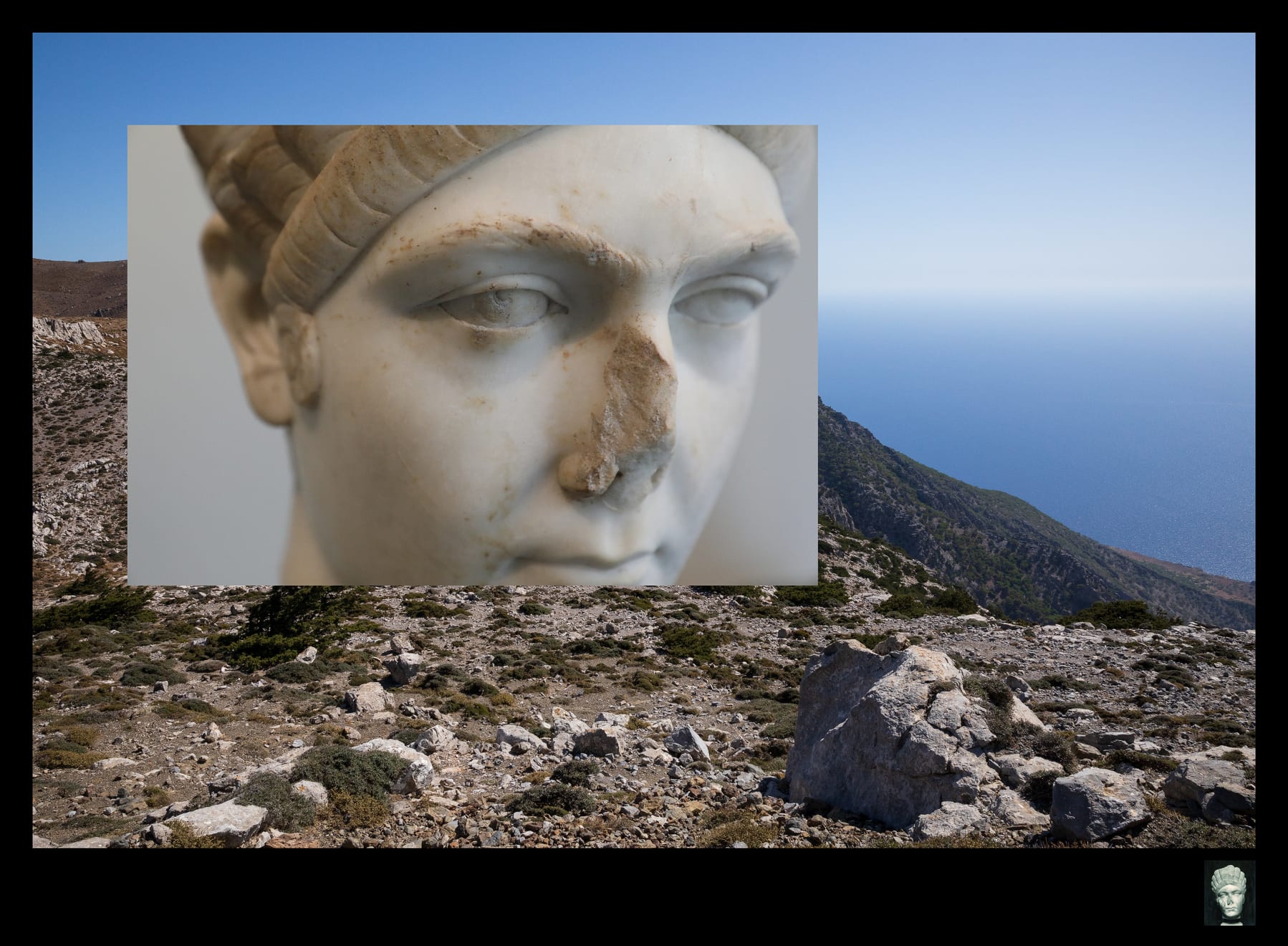Andrew Hazewinkel
Seafarers will tell you that the horizon is roughly 22kms distant (about 12 nautical miles). This is true if you are on the deck of a ship, but if you are on a liferaft, or a surfboard, the horizon is about 4.5 kms away. Horizons are set by the space that separates our eyes from sea level. This handy formula helps to work it out – square root (height above surface/0.5736) = distance to horizon.
A friend once said to me ‘it’s always better to be just below the horizon, that way people can sense your emergence but can’t focus on you as a target’.
The altitude of the landscape in this photograph is roughly 700m above sea level, so its horizon is roughly 122 kms away, which here is half way to the Libyan coast. Considering the fixed gaze of this remarkable portrait (and what we know about who it represents) it sets us thinking about what (in this context) she may be sensing.
Meet Marciana, the elder sister of the Roman Emperor Tarjan whose reign is best known for territorial expansion, public building works and the development of social welfare systems. Marciana and Trajan were close, she travelled with him on his campaigns, they were a dynamic duo, but I can’t shake the idea that his social welfare ideas were actually hers.
Unlike the position of this life-sized portrait (c.130 CE) in the airless galleries on the Metropolitan Museum of Art (NY) here Marciana gazes across the Libyan Sea toward the horizon. This photograph’s archival source is a gelatin silver print from an archive in Rome comprised of images generated to support the acquisition of ancient objects by new world museums. In it we see Marciana wearing an elaborate hairstyle. In my portrait of Marciana I am more interested in the precise engraving of her eyes (which to my mind at least) are a way in to knowing her.
As with all good portraits this portrait of Marciana leaves you with a sense of embodied mutuality, the sense that you somehow know, or better, share something with her, and it is this fragile hard to pin down sense of connection that keeps us all connected, especially in difficult times. With this Journey in the Lifeworld of Stones those of us that have gazed out to sea, at uncertain horizons, might sense the ongoing spirit and support of a woman long gone.




